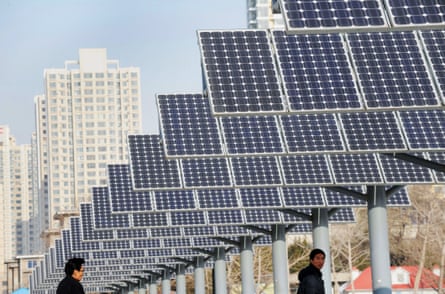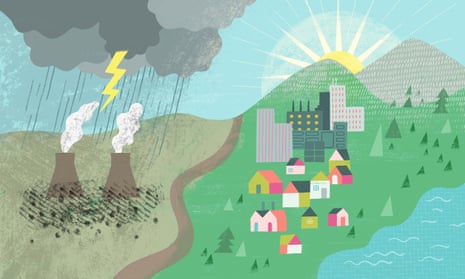Optimism has always been in short supply in conversations about global warming. Only for the briefest window – after the Paris climate agreement was reached in December 2015 – did the words “climate” and “hope” look reasonable next to each other in headlines. Then came 2016.
And yet, in spite of these past 12 months, I remain optimistic.
Yes, I know that Donald Trump – a man who has dismissed global warming as “very expensive … bullshit” – was elected president of the world’s second biggest emitter of carbon dioxide. His actions since his inauguration have only confirmed his intentions to halt progress to reduce the vast emissions produced by the US.
And I know that in the UK there’s yet more cause for concern. A series of U-turns has transformed the UK from a world leader to a world let-down. The Department of Energy and Climate Change has been scrapped. The country is expected to miss its 2020 climate targets. And the weakening of the European Union, caused by the Brexit vote, may jeopardise climate action across the continent.
These are serious developments, but I’m not convinced they’re big enough to unsettle progress.
In fact, a defiant mood has emerged in response to these setbacks.
Some of this defiance comes from within the US itself. Most notably California, the richest US state, is poised to tackle Trump’s climate stance head on. Governor Jerry Brown proclaimed: “We’re ready to fight. We’re ready to defend.” Elsewhere in the US, cities have pulled funding from Wells Fargo bank, citing its involvement in the infamous Dakota Access pipeline. And hundreds of companies have urged Trump to continue progress towards a low-carbon economy.
But the most striking response to Trump has been from the only nation that emits more carbon dioxide than the US: China. China is seizing Trump’s election as an opportunity to become a global climate leader. Make no mistake – this is a defiant act.

China explicitly rejected Trump’s absurd suggestion that climate change is a Chinese hoax. And Xie Xiaoping, the chair of Huanghe Hydropower Development, a large scale power developer, offered: “The Chinese government will carry out and fulfil its international commitments … I don’t care what Mr Trump says … I think what he says is nonsense.”
China is already backing up this talk with action. China’s solar capacity doubled in 2016. The country will plough £292bn more into renewables by 2020. In fact, China is already building more renewables than any other nation. Most remarkably of all, China’s dependence on coal is faltering. Its demand for coal may even have peaked.
It’s hard to stress how amazing this last fact is. Only a few years ago, climate scientists and economists spoke about the never-ending rise of coal in China as an inevitable, insurmountable problem. After giving climate talks, I would be asked “why should we bother doing anything when China keeps burning more coal?” by skeptical audience members. The idea of China leading the climate fight would have been unthinkable then. Today, Chinese youth are more concerned about climate change than any other threat, suggesting that Chinese climate action will only intensify with time.
And China is just one example of progress, albeit a dramatic one. Sweden has set a deadline for reaching zero emissions. Despite continued coal development, India has now unveiled ambitious levels of renewable deployment for the next decade. Even the great oil producer, Saudi Arabia, is seeking to become a “solar powerhouse”. The list goes on.
These actions add up. The once relentless year-on-year rise of carbon dioxide emissions has flatlined for the past three years. Some analysts project that they could finally begin falling by 2020.
Despite this progress, my optimism remains cautious. I know that the pledges in the Paris deal will see temperatures rise by 3C above pre-industrial levels, well above the 2C that the deal aims to stay below. This kind of temperature rise could force millions from coastal cities, while rendering other regions uninhabitable. Low-lying island nations may cease to exist.
But the prevailing mood gives me hope. A few years ago, inaction on climate change was the norm. Today, the expectation is progress. The world has formally agreed that this is a problem that needs to be tackled, and no country besides the US has threatened to renegue on this agreement.
Renewable energy is fast becoming so cheap that it’s often the best option, and coal power plants are closing around the world – even in Trump’s America. Grassroots movements are gaining traction the world over, building on what momentum there is. Today, it’s the Trumps of the world who are the outliers.
For the first time in my life, I feel like we are moving along the path to tackling climate change. Now we need to make sure we sprint rather than saunter.
Adam Levy is a reporter at Nature, as well as a climate change YouTuber (ClimateAdam). Follow @ClimateAdam.
To pitch an idea for our Optimistic thinking for 2017 series, email globaldevpros@theguardian.com.
Join our community of development professionals and humanitarians. Follow @GuardianGDP on Twitter.
